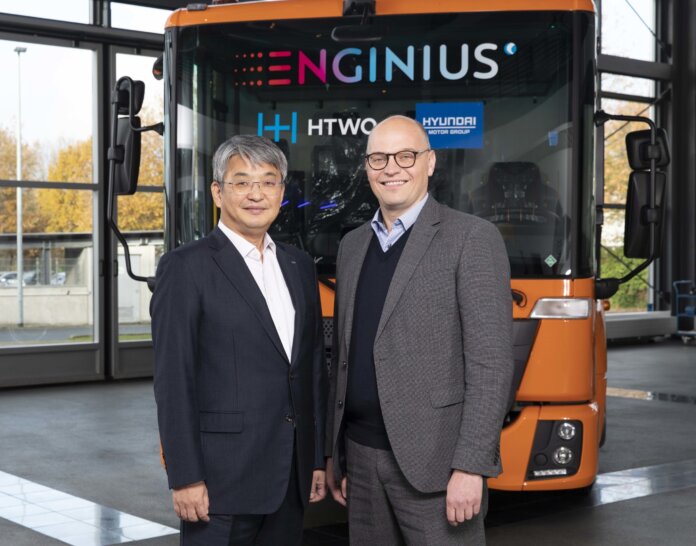Hyundai Motor Group‘s dedicated fuel cell system brand, HTWO, has signed into a partnership with ENGINIUS, a subsidiary of FAUN Group, to supply fuel cell systems for the mass production of hydrogen-powered commercial trucks. Through its cooperation with FAUN Group, a player in the European refuse truck market, HTWO will further accelerate its fuel cell system business.
HTWO’s 90 kW fuel cell system will be paired with ENGINIUS chassis to provide zero-emission power for waste collection trucks and medium cargo trucks for intra-city goods delivery. HTWO’s fuel cell electric vehicle technology is well established through Hyundai’s NEXO FCEV, which has sold over 30,000 units worldwide.
ENGINIUS is Europe’s first truck manufacturer with an EU-type approval for FCEVs. It has already supplied 60 BLUEPOWER waste collection trucks to waste disposal companies throughout Europe.
The CITYPOWER medium cargo truck will be equipped with HTWO’s fuel cell system for field testing in 2024 and series production is scheduled to start in 2025.
“This strategic partnership with ENGINIUS marks yet another significant milestone in HTWO’s mission to free humanity from fossil fuel dependency in the commercial vehicle market,” says Taewon Lim, executive vice president of the Hydrogen and Fuel Cell Business Center at Hyundai Motor Group. “This is the first time we are supplying our fuel cell system to another OEM at a large scale. ENGINIUS’ initial fleet of more than 1,100 fuel cell trucks will represent a significant expansion of Hyundai’s fuel cell system business.”
“I am very pleased that we have been able to partner with Hyundai Motor Group, a proven expert in the field of fuel cell technology,” states Patrick Hermanspann, CEO of FAUN Group.
“Our customers will benefit from our joint know-how and this partnership will provide a boost to carbon-neutral commercial trucking,” adds Thorsten Baumeister, CEO of ENGINIUS’ Trucks Division.
The two parties expect to collaborate further on eco-friendly drivetrain solutions for commercial vehicles in the mid- to long-term.




